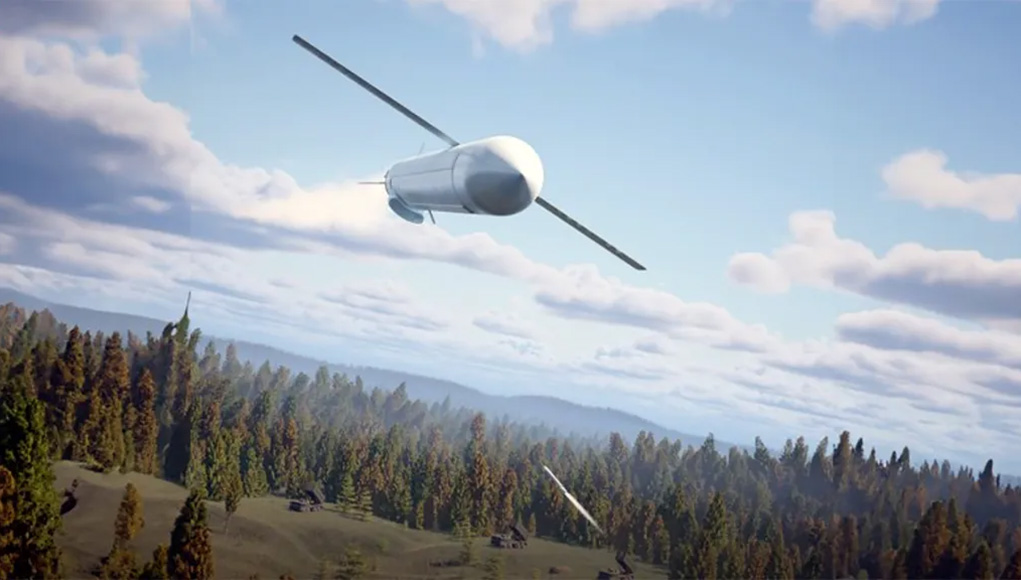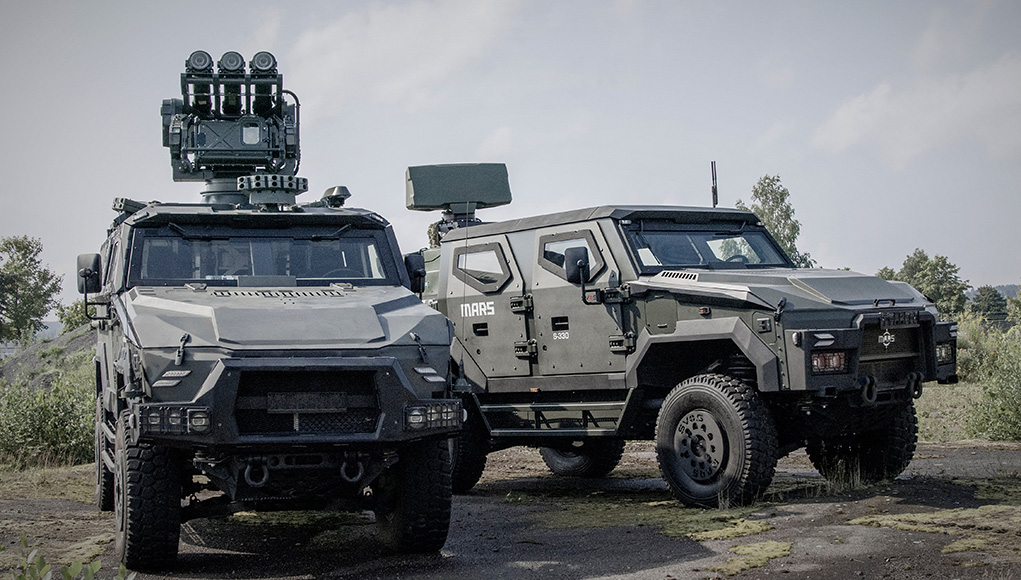
The U.S. Army has awarded two contracts totaling $22 million to American Rheinmetall Vehicles, LLC, and HDT Expeditionary Systems, Inc. for developing Small Multipurpose Equipment Transport (S-MET) Increment II prototypes.
The S-MET Increment II builds upon the capabilities of the original S-MET, a radio-controlled, eight-wheeled platform designed to carry equipment, generate power, and move without constraints.
While the first increment could carry 450 kg (1,000 lbs.) of equipment, the second iteration seeks to increase this capacity to about 900 kg (2,000 lbs.) Additional improvements include higher exportable power for modern mission payloads, improved audio signature reduction, a dismounted wireless mesh communication network, increased reliability, worldwide grid charging, and a modular, open architecture for easier upgrades. In 2020, General Dynamics Land Systems was awarded a contract worth $249 million for the first increment of S-MET Unmanned Ground Vehicles (UGV), expected to deliver 409 S-METs by 2025.
Kyle Bruner, the Army’s project manager for Force Projection, emphasized that the S-MET Increment II addresses capability gaps related to excessive physical burdens on soldiers, battery recharging during continuous operations, and reducing sustainment burdens for semi-independent operations. The enhanced S-MET is expected to improve small-unit combat effectiveness by shifting physical loads from soldiers to the robotic platform, thereby reducing fatigue and injury risks. Successful developmental testing of the S-MET Increment II prototypes is anticipated to lead to a production contract in late Fiscal Year 2027, with an Army Acquisition Objective of up to 2,195 systems.

L3Harris Develops Modular Mission Payload for Landmine Detection
L3Harris introduced a payload enabling autonomous detection, mapping, and landmine clearance using UAVs deployed from robotic vehicles, allowing safe breaching operations. Developed in collaboration with the U.S. Army Combat Capabilities Development Command Armaments Center and strategic partners, this innovative system enables a single operator to conduct wide-area, autonomous detection, mapping, and reduction of landmines. The technology significantly expands the area considered for safe breaching pathways while reducing warfighters’ exposure to dangerous situations.
The AI-driven system utilizes commercial unmanned systems, deploying a coordinated swarm of Group 1 Unmanned Aerial Systems (each weighing less than 10 kg) from a robotic vehicle. These drones, equipped with specialized payloads and detection sensors, can extend the system’s reach beyond one kilometer, allowing troops to rapidly identify multiple breachable paths simultaneously.
A single operator manages the entire operation through a Human-Machine Interface, receiving real-time data on obstacle locations and imagery. This remote operation capability ensures troops can remain safely behind the front lines while unmanned assets execute critical and hazardous breaching operations with precision and efficiency.

Textron Delivers Ripsaw M3 Prototypes for Robotic Combat Vehicle Program
In collaboration with Howe & Howe and Teledyne FLIR Defense, Textron Systems has delivered prototypes of the Ripsaw M3 for the U.S. Army’s Robotic Combat Vehicle (RCV) program. The Ripsaw M3 is an advanced unmanned ground vehicle designed to enhance the Army’s combat capabilities through robotic technology.
The RIPSAW M3 leverages a modular open systems architecture (MOSA) design and common chassis to support a variety of interchangeable payloads from a basic flat-top deck configuration. A rugged and reliable RCV platform, the vehicle is designed to meet Army requirements while preserving transportability and mission versatility.
The Ripsaw M3 is expected to provide increased situational awareness, improved force protection, and enhanced lethality on the battlefield. Previous announcements by Textron also mentioned cooperation with Kodiak Robotics to integrate new autonomy systems in the robotic vehicle.
Team RIPSAW has invested in this family of robotic vehicles since 2019, when the RIPSAW M5 system first debuted. Later variants, including the M5-E (electric) and M3 Tech Demonstrator, leveraged the team’s collaboration with industry partners, academia, and the U.S. Army to perform multiple mission sets in various environmental and test conditions. Since 2019, the RIPSAW vehicles have amassed over 4,700 miles of durability testing.

US Army Seeks New Long-Range Interceptor for Counter-UAS Missions
The US Army has issued a Request for Information (RFI) to develop a new interceptor for countering small unmanned aircraft systems (C-sUAS). The Combat Capabilities Development Command (DEVCOM) Aviation and Missile Center spearheads this initiative to create a Stinger Vehicle Universal Launcher compatible missile with greater range than the current Stinger for C-sUAS missions.
The project, known as the Extended Range Counter-sUAS (XRC) Science & Technology program, seeks to enhance various C-sUAS kinetic missile interceptor capabilities. Key objectives include increasing range, reducing reaction time, improving lethality and reliability, and decreasing reload time for fixed-site and mobile C-sUAS configurations. The new interceptor is expected to maintain effectiveness against traditional MSHORAD (Mobile Short Range Air-Defense) targets while providing maneuver forces with a quick-response, high-speed, long-range kinetic interceptor capability against Group 3 sUAS operating at higher altitudes and greater standoff ranges.
The XRC may be integrated with existing Army air defense and C-UAS systems to support various operational configurations, including fixed, semi-fixed, mobile, mounted, and potentially dismounted operations. The Army anticipates a prototype demonstration before the 2030 fiscal year.

UK’s Request Proposals for Affordable Long-Range Weapon System
The UK Ministry of Defense launched a tender for Project Brakestop to develop a new long-range weapon system. inspired by Ukraine’s drone capabilities, the new weapon would become a long-range, cost-effective weapon system, with production expected by 2025. Cost efficiency and rapid deployment are central to the project’s goals. The unit cost is capped at £400,000 (approximately $535,000). The Brakestop project’s specifications call for a cruise, ballistic, or drone capable of striking ground targets. Key requirements include ground-based launch, a minimum speed of 600 km/h, and the ability to hit targets within a 600-kilometer range with 30-meter accuracy. The system must function effectively under active electronic warfare conditions and without satellite navigation. Unlike some existing systems, Brakestop demands a significant payload capacity of 200-300 kg, equivalent to the Mk 82 500-pound general-purpose bomb.

Lithuania Acquires Additional NASAMS, RBS70 Air Defense Systems
Lithuania has expanded its NASAMS air defense capabilities, including upgrades to the previously acquired units. Part of these units have been transferred to Ukraine. With this new procurement, Lithuania further strengthens its commitment to the NASAMS community, which consists of 13 nations.
This latest acquisition follows orders placed in December 2023 to increase the number of NASAMS fire units in Lithuania’s arsenal and compensate for assets delivered to Ukraine. The deal also includes upgrades to parts of the NASAMS equipment that Lithuania initially purchased in 2017, ensuring the country maintains a cutting-edge air defense system.
 Lithuania also strengthens its mobile, short-range air defense (MSHORAD), adding a second battery of Saab RBS70 systems worth SEK 1.2 billion ($115 million). Deliveries of the new systems are expected to begin in 2026 and last through 2029. This order follows an initial MSHORAD contract announced in July 2024.
Lithuania also strengthens its mobile, short-range air defense (MSHORAD), adding a second battery of Saab RBS70 systems worth SEK 1.2 billion ($115 million). Deliveries of the new systems are expected to begin in 2026 and last through 2029. This order follows an initial MSHORAD contract announced in July 2024.
The MSHORAD solution comprises a Mobile Radar Unit based on the Giraffe 1X radar and a Mobile Firing Unit using the RBS 70 NG, all connected through Saab’s ground-based air defense command and control system, GBAD C2. Saab will integrate the MSHORAD components into JLTV vehicles manufactured by the U.S. company Oshkosh before delivering them to Lithuania.

Terma to Integrate Advanced VSHORAD for the Royal Danish Army
Terma has been tasked with delivering system integration for a Very Short Range Air Defense (VSHORAD) system for the Royal Danish Army’s 1st Brigade. The system will incorporate advanced sensors, including radar, with cutting-edge effectors such as the recently contracted Rheinmetall Skyranger 30. Terma’s proprietary command and control software, BMD-Flex, will manage the entire system, which will communicate through Terma’s communications infrastructure.
The VSHORAD system operates on the “any sensor, best shooter” principle, forming part of a broader multi-domain defense system that includes Denmark’s frigates and F-35 fighter jets. This approach allows for efficient threat detection and neutralization across various platforms. The system is designed to protect ground military units within the brigade’s operational area and aligns with NATO’s force goals for Denmark in VSHORAD capabilities.
This project is the first order under a 30-year framework agreement established between the Danish Defence Acquisition and Logistics Organization (DALO) and Terma. The agreement, signed last year, names Terma as the system integrator for the complete VSHORAD system.
More News This Week:




















